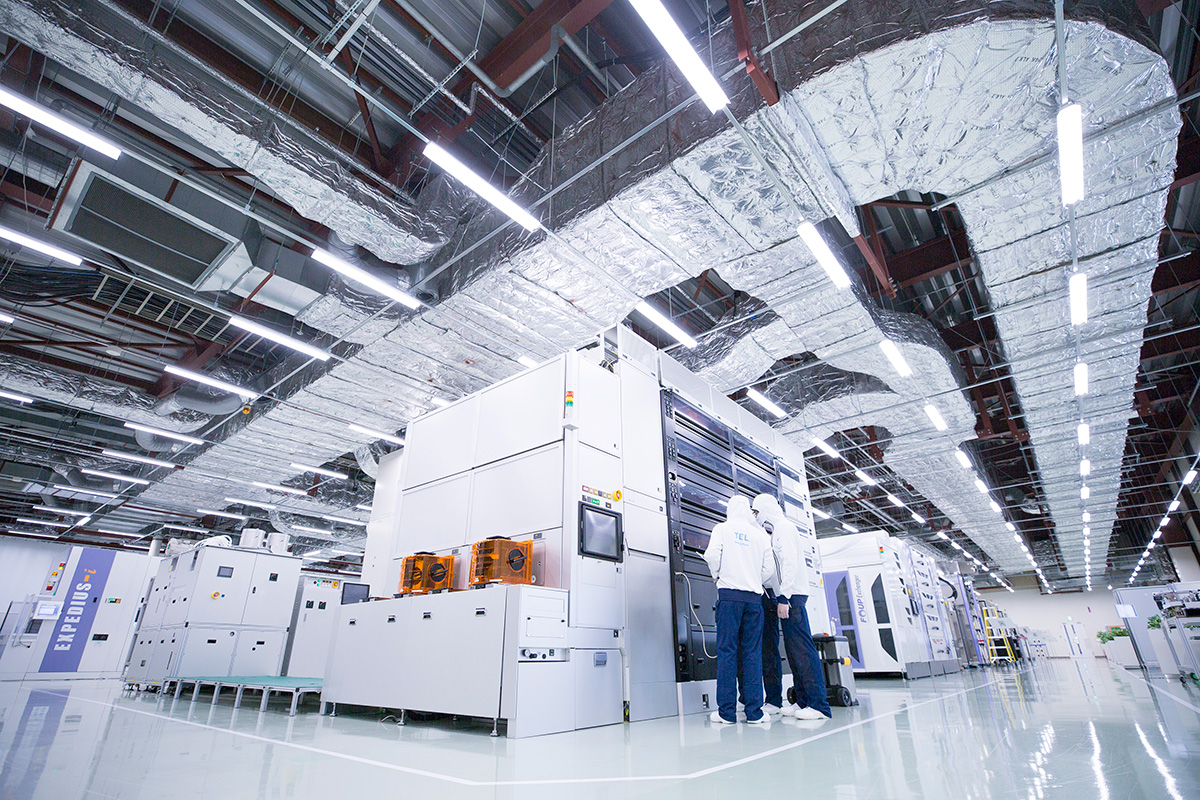The company’s long-established commitment to technological innovation, creativity and dreaming big means the future is as bright as ever.

“At Tokyo Electron, we embrace the concept of Creating Shared Value, leveraging our corporate expertise to address various social issues as well as contributing to society.”
Toshiki Kawai, Representative Director, President & CEO, Tokyo Electron Ltd.
Since the invention of transistors in 1947, the semiconductor industry has seen the emergence of PCs in the 90s, mobile communications in the 2000s and, most recently, significant growth in AI-centric and virtual reality applications. In other words, it is the driving force behind numerous technological breakthroughs, a state of affairs reflected by the fact that the semiconductor market reached USD 574 billion in fiscal year 2022, and is predicted to almost double by 2030 (Source: 2022 (WSTS)/ 2030 (IBS, August 2023)).
Meanwhile, the so-called MAGIC market (a term originally coined by Tokyo Electron) encompassing the Metaverse, Autonomous mobility, Green energy, IoT/information, and Communications (MAGIC), is also expected to grow steadily in the next decade, with demand for semiconductor production equipment increasing around the globe.
The semiconductor industry, therefore, is expected to have a bright long-term future, but the companies involved in the sector need to sit tight and prepare for the future. For its part, Tokyo Electron (TEL), which will soon celebrate its 60th anniversary, has set a new vision.
President and CEO Toshiki Kawai emphasizes that TEL’s vision is to be: “‘A company filled with dreams and vitality that contributes to technological innovation in semiconductors.’ Indeed, we currently hold about 22,000 patents for semiconductor production equipment, making us the industry leader.”
“At TEL,” he continues, “we leverage our expertise in semiconductor production equipment to contribute to the world’s digitalization efforts and support environmental sustainability, promoting the realization of a more carbon-neutral society. By doing so, we enhance both our corporate value and society’s sustainable growth.”
Key here is the company’s sustained investment in R&D. Mr. Kawai takes up the thread: “We are investing significantly in R&D, having already invested JPY 600 billion between FY2018 and FY2022, and with plans to invest over JPY 1 trillion between FY2023 and FY2027.”
So far, the investments have been a startling success. See, for example, groundbreaking innovations such as etching process equipment capable of reaching a depth of 10 microns at more than twice the speed of previous capabilities while also consuming 40% less power.
In addition to increased R&D funding, the firm has both expanded the production capacity of existing plants and built new plants, and plans to invest 124 billion yen in capital expenditures this fiscal year.
Mr. Kawai highlights the importance of R&D investment. “When I joined TEL in 1986,” he says, “the Japanese semiconductor industry held a global market share of 50%, but when the economic bubble burst, many Japanese firms halted their capital investments. In contrast, our overseas customers, such as Taiwanese and Korean semiconductor manufacturers, persisted in their investments. We must keep these insights at the forefront of our minds to ensure prosperity and further growth.”
TEL will continue to cater to different customer needs and new entries into the field. Mr. Kawai again: “Our company boasts a diverse product lineup, leveraging various cutting-edge technologies. From deposition, coating/development and etching to cleaning, we have a wide array of offerings. Our products are underpinned by extensive chemical knowledge, and drawing from this rich expertise, we are able to present our clients with a range of proposals and solutions.”
Looking to the future, the company is aiming to achieve more than JPY 3 trillion in net sales, an operating margin of over 35% and at least a 30% return on investment (ROE) by fiscal year 2027.
Exciting times are ahead, meanwhile, for the country and Japanese firms as a whole. With comparatively lower profit ratios than larger US and European companies, there is a wealth of opportunities for growth and enhancement, opportunities that are there for the taking if companies such as TEL can continue to demonstrate tangible progress and growth.
0 COMMENTS